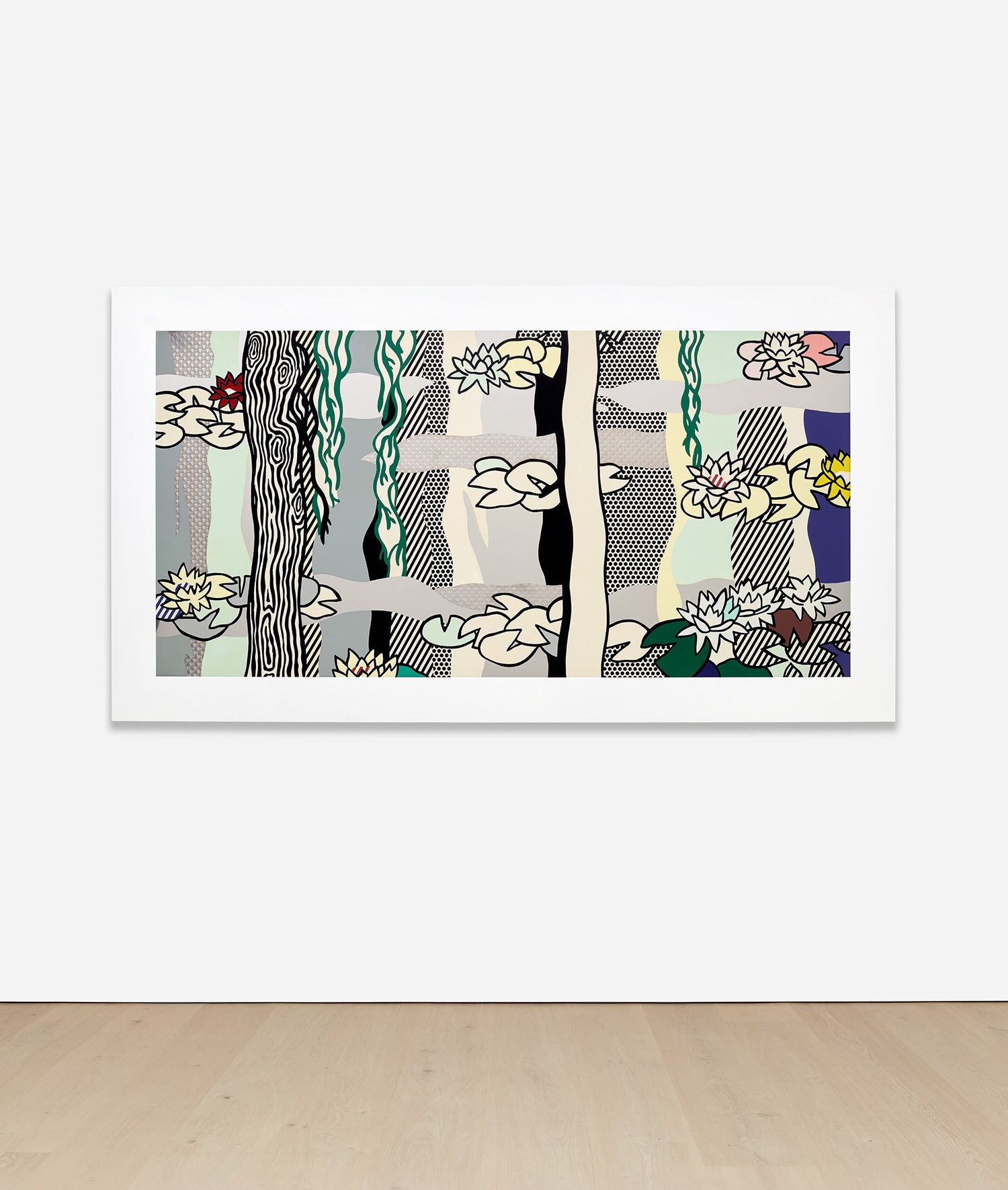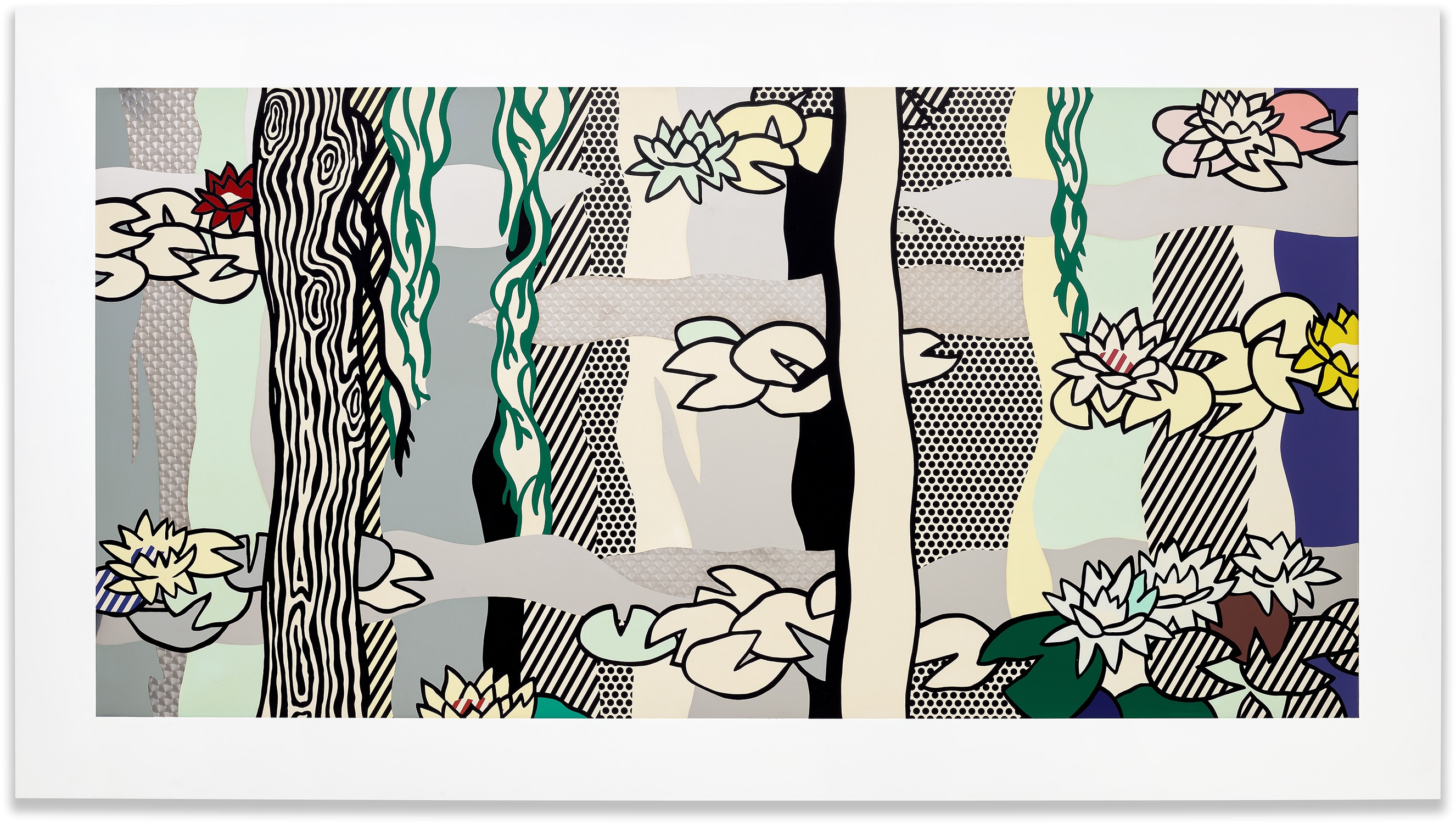



Property from a Private European Collection
123Ο◆
Roy Lichtenstein
Water Lilies with Willows, from Water Lilies (C. 266)
1992
Screenprinted enamel in colours, on processed and swirled stainless steel, the full sheet.
framed 147.5 x 264.5 cm (58 1/8 x 104 1/8 in.)
Signed, dated and annotated 'O.K.' in black felt-tip pen on the reverse (the single bon à tirer or 'good to print' proof before the edition of 23 and 7 artist's proofs), published by Saff Tech Arts, Oxford, Maryland, contained within the original artist's specified white wooden frame.